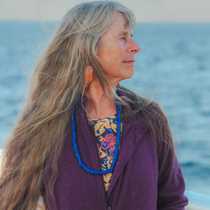Moving through the Cascade Mountain Range during the night, the Sea Bird carried her intrepid travelers farther east moving up the Columbia River. We awoke away from the temperate rainforest of the western coast of Washington and Oregon and entered the Channeled scablands located behind the rain shadow created by those same Cascade Mountains. The Columbia River Basalt flows were now more visible, our vessel had moved along its river path away from the thick forests of the west and into the vegetation of this area which was sparse and much smaller in stature. The landscape appeared scraped, scarred and definitely scabbed over.... if one looked more closely one would notice the plant communities were taking hold, albeit, it was a much hardier form of vegetation. The plants that thrive in this arid and severe environment needed their survival skills to withstand long exposure to sun and less than thirteen inches of rain per year. During the morning hours we continued moving east and along the banks of this mighty river we saw stands of Black cottonwoods, several species of Willows intermixed with Tule reeds and grasses, all flourishing due to the abundance and nourishment of water close at hand.
The Columbia River is 1,243 miles in length. It drains an area the size of the state of Texas, approximately 259,000 square miles. Rainfall in the headwaters, located in British Columbia, and tributaries along the Columbia’s course are so great that it carries the second largest volume of water in the United States (after the Mississippi). It is the largest river in the Western Hemisphere to enter the Pacific Ocean, and occupies the only northwest valley, which provides access to the continental interior. Today, we traveled that same path, moving through a mountain range, seeing the changing landscape, as we moved east towards the western interior. There were slide presentations about Lewis and Clark and the Corps of Discovery, moving through the west. We saw an overview of the diversity of plants, along with an introduction to the indigenous peoples, who also see the Columbia River as their front doorstep, larder and highway. This is definitely a river rich in natural and cultural history and we have only begun to see her many twists and turns as she continues to carry us east towards tomorrow’s sunrise and yet another full day!




